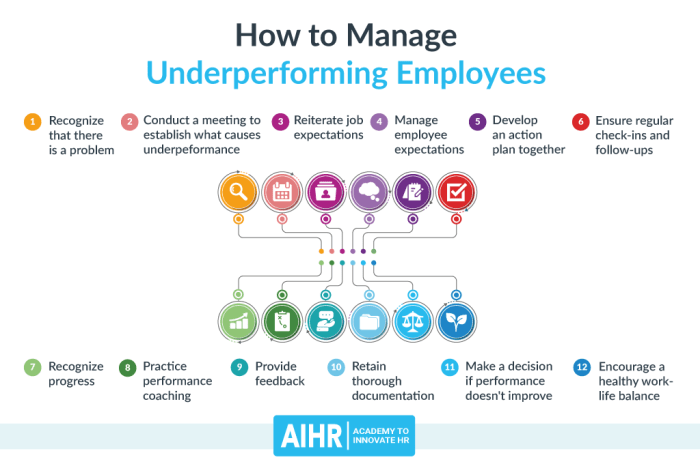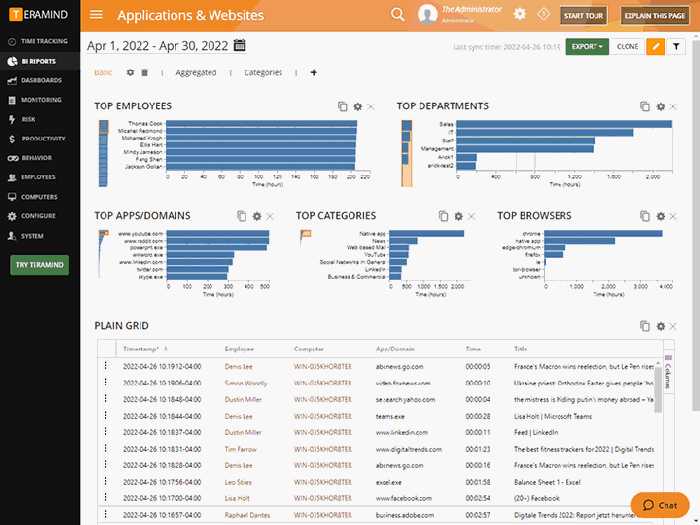With employee monitoring systems managers can supervise employees work speeds at the forefront, this paragraph opens a window to an amazing start and intrigue, inviting readers to embark on a storytelling journey filled with unexpected twists and insights. The content of the second paragraph provides descriptive and clear information about the topic.
Employee Monitoring Systems: A Comprehensive Overview

Employee monitoring systems (EMS) are software applications that allow managers to track and measure employee activity on company devices and networks. These systems can provide valuable insights into employee productivity, work habits, and potential security risks.
There are many different types of EMS available, each with its own unique set of features and capabilities. Some of the most common types of EMS include:
- Time tracking systemstrack the amount of time employees spend on specific tasks or projects.
- Activity monitoring systemstrack the specific actions employees take on their computers, such as the websites they visit, the files they access, and the applications they use.
- Productivity monitoring systemstrack employee productivity levels, such as the number of emails sent, the number of documents created, and the number of tasks completed.
- Security monitoring systemstrack employee activity for potential security risks, such as unauthorized access to sensitive data or attempts to install malware.
EMS can provide a number of benefits for businesses, including:
- Increased productivity:EMS can help managers identify areas where employees are spending too much time on non-productive activities. This information can then be used to improve training and development programs and to create more efficient workflows.
- Improved security:EMS can help managers identify potential security risks and take steps to mitigate them. This can help protect the company from data breaches, malware attacks, and other security threats.
- Reduced costs:EMS can help managers identify areas where the company can save money. For example, EMS can be used to track employee overtime and to identify employees who are not using their time efficiently.
However, there are also some potential drawbacks to using EMS. These include:
- Employee privacy concerns:EMS can collect a lot of data about employee activity, which can raise concerns about employee privacy. It is important for businesses to implement EMS in a way that is transparent and respectful of employee privacy.
- Cost:EMS can be expensive to implement and maintain. Businesses should carefully consider the costs and benefits of EMS before making a decision about whether or not to implement a system.
- Employee morale:EMS can have a negative impact on employee morale if employees feel that they are being constantly monitored. It is important for businesses to use EMS in a way that is fair and reasonable and to communicate openly with employees about the use of EMS.
Measuring Work Speeds with Monitoring Systems

EMS can use a variety of methods to measure employee work speeds. These methods include:
- Time tracking:EMS can track the amount of time employees spend on specific tasks or projects. This information can be used to calculate employee work speeds.
- Activity monitoring:EMS can track the specific actions employees take on their computers, such as the websites they visit, the files they access, and the applications they use. This information can be used to infer employee work speeds.
- Productivity monitoring:EMS can track employee productivity levels, such as the number of emails sent, the number of documents created, and the number of tasks completed. This information can be used to calculate employee work speeds.
It is important to note that no single method of measuring work speeds is perfect. Each method has its own advantages and disadvantages. The best approach is to use a combination of methods to get a more accurate picture of employee work speeds.
Accurate work speed measurement is important for a number of reasons. First, it can help managers identify employees who are not meeting expectations. This information can then be used to provide additional training or support to these employees.
Second, accurate work speed measurement can help managers identify areas where the company can improve its efficiency. For example, if managers find that employees are spending too much time on non-productive activities, they can take steps to streamline workflows and improve training programs.
Third, accurate work speed measurement can help managers make more informed decisions about staffing levels. For example, if managers find that employees are consistently working overtime, they may need to hire additional staff to meet demand.
Supervising Employee Performance with Monitoring Systems: With Employee Monitoring Systems Managers Can Supervise Employees Work Speeds

EMS can play a valuable role in supervising employee performance. EMS can provide managers with objective data about employee activity, which can be used to identify areas for improvement. For example, EMS can be used to:
- Identify employees who are not meeting expectations.EMS can track employee productivity levels and activity levels to identify employees who are not meeting expectations. This information can then be used to provide additional training or support to these employees.
- Identify areas where the company can improve its efficiency.EMS can track employee activity levels to identify areas where the company can improve its efficiency. For example, if managers find that employees are spending too much time on non-productive activities, they can take steps to streamline workflows and improve training programs.
- Make more informed decisions about staffing levels.EMS can track employee activity levels to identify areas where the company needs to hire additional staff. For example, if managers find that employees are consistently working overtime, they may need to hire additional staff to meet demand.
It is important to note that EMS should not be used as the sole basis for making decisions about employee performance. Managers should also consider other factors, such as employee feedback, peer reviews, and customer feedback.
Ethical Considerations in Employee Monitoring
The use of EMS raises a number of ethical concerns. These concerns include:
- Employee privacy:EMS can collect a lot of data about employee activity, which can raise concerns about employee privacy. It is important for businesses to implement EMS in a way that is transparent and respectful of employee privacy.
- Employee morale:EMS can have a negative impact on employee morale if employees feel that they are being constantly monitored. It is important for businesses to use EMS in a way that is fair and reasonable and to communicate openly with employees about the use of EMS.
- Discrimination:EMS can be used to discriminate against employees based on their race, gender, religion, or other protected characteristics. It is important for businesses to implement EMS in a way that is fair and non-discriminatory.
To address these ethical concerns, businesses should implement EMS in a way that is:
- Transparent:Employees should be aware of the fact that they are being monitored and should be provided with information about how their data is being used.
- Respectful of privacy:EMS should only collect data that is necessary for business purposes and should not be used to invade employee privacy.
- Fair and non-discriminatory:EMS should be implemented in a way that is fair and non-discriminatory to all employees.
Commonly Asked Questions
What are the benefits of using employee monitoring systems?
Employee monitoring systems offer several benefits, including increased productivity, improved accuracy, reduced costs, enhanced security, and better customer service.
What are the ethical concerns surrounding employee monitoring?
Ethical concerns surrounding employee monitoring include privacy violations, potential misuse of data, and the erosion of trust between employees and employers.
How can employee monitoring systems be implemented ethically?
To implement employee monitoring systems ethically, employers should ensure transparency, obtain employee consent, define clear purposes, limit data collection, and protect employee privacy.